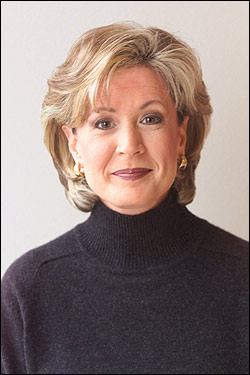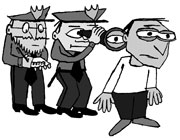Margaret Larson spent 25 years in local and national television news, including working as a domestic and foreign correspondent for NBC and anchoring the news in Seattle at KIRO-TV and then KING-TV. In the past 12 years, working as program documentation officer for the Portland-based aid group Mercy Corps, she has seen many of the world’s ugliest scenes: Lebanon, Kosovo, Pakistan, Iraq. Back from two weeks in Indonesia’s Aceh province, she calls the devastation there by far the worst she’s ever seen. “The analogy that most people are making is Hiroshima,” says Larson. “The old black-and-white photos come as close as anything I can think of to capturing the level of devastation.”
Of Banda Aceh, the provincial capital of 300,000, Larson says, “The destruction is to me very difficult to explain. I’ve not ever seen anything quite like it, not in terms of the extent of the damage, the geographical scope of it, the loss of life, the complete and utter destructiveness of it. Even an earthquake or a typhoon or a hurricane is less destructive overall. A war zone is less destructive. It was just pretty extreme by any measure that I would have.”
Larson described the protocol that relief agencies used to address the catastrophe: coordinating with other groups, using the United Nations as an umbrella group, doing assessments of need, and quickly moving into food and water distribution to try to forestall the spread of hunger and disease. In the case of Mercy Corps, the group had been working elsewhere in Indonesia since the Asian financial crisis five years ago, smoothing the way for governmental assistance. “We found them remarkably cooperative. . . . They made it very easy for people coming in for humanitarian work to get special visas and to get permission to travel,” Larson says. “They also lent three 27-meter patrol boats that we used to move goods and for an offshore command post on the west coast, since there were no real buildings or places for us to get based on to get started and get water and sanitation engineers in there.”
The rapid mobilization was not the only reason outbreaks of disease were largely forestalled. “Frankly, a lot of people [had already] died,” Larson says. “There were scattered refugee encampments, but not the big, epic sorts of camps you see in war zones.”
According to Larson, aid groups will stay on an emergency footing for as short a time as possible, switching to development programs and a resumption of the cash economy. Eventually, after three to six months, groups will begin long-term economic development programs, depending on how long organizations can make donations last and how much donor and government support continues to come in.
“It’s generally over time, six months or a year, that you find out whether governments fully fund their pledges,” Larson explains. “In terms of private giving, this has been phenomenal for most major relief organizations. There’s been a tremendously generous outpouring from private citizens”—an estimated three in 10 Americans have given to tsunami relief—”and then we need to be wise with the money that we have. Sometimes, the temptation is to go overboard with the early emergency phase, when in fact, if you provide free food and water for longer than necessary, you’re actually damaging the local economy.”
After her time in Indonesia, Larson is both haunted and hopeful: haunted by the devastation and by the question of what made the public response to this catastrophe different, and hopeful that the tremendous global outpouring of support can be replicated in the future. Why, compared to all the other natural and man-made disasters plaguing humanity—wars, disease, starvation, extreme weather—did last month’s event trigger such generosity?
“How do we harness that?” Larson asks. “How do we, for example, draw attention to the fact that as many kids die of malaria every month as kids were killed in the tsunami?” Such deaths, often as not, are entirely preventable—with political will, economic infrastructure, and, always, money.
When there’s poverty or war involved, it’s very easy for people to start assigning blame, but the people who help cause privation are rarely the ones who actually suffer from it. As the world shrinks, it becomes easier for neighbors to quarrel but also easier for empathy to transcend places and cultures.
After her weeks in Indonesia—time during which she was struck by the openness and gratitude of the people she met—Margaret Larson is upbeat. “It seems like it’s kind of a promising time in a lot of ways. Perhaps we can build on that.
“After Iraq and everything that’s happened, perhaps there’s part of us that’s interested in another way in engaging the world.”







